Key Takeaways
1. Goal-Directed Design focuses on user satisfaction through goal achievement.
If we design and construct products in such a way that the people who use them achieve their goals, these people will be satisfied, effective, and happy and will gladly pay for the products and recommend that others do the same.
User-centric approach. Goal-Directed Design prioritizes understanding user desires, needs, motivations, and contexts. It also considers business, technical, and domain opportunities, requirements, and constraints. This approach aims to create products whose form, content, and behavior are useful, usable, and desirable, as well as economically viable and technically feasible.
Beyond features. Unlike traditional development processes that focus on features and functions, Goal-Directed Design emphasizes the user's goals. By understanding why users use a product, designers can create solutions that are more effective and engaging. This leads to greater user satisfaction and, ultimately, business success.
Design before coding. The Goal-Directed process advocates for design to precede coding and testing. This ensures that products are built with a clear understanding of user needs and that design decisions are not simply a byproduct of the construction process. This proactive approach results in products that are more user-centered and effective.
2. Implementation models often clash with user mental models.
The closer the represented model comes to the user’s mental model, the easier he will find the program to use and to understand.
Bridging the gap. A key challenge in interaction design is aligning the implementation model (how the software actually works) with the user's mental model (how the user expects it to work). When these models clash, users experience confusion and frustration. The designer's role is to create a represented model that bridges this gap.
Mental models matter. Users don't need to understand the technical complexities of a system to use it effectively. They rely on mental models, which are simplified representations of how things work. By designing interfaces that are consistent with these mental models, designers can make products more intuitive and user-friendly.
Implementation model trap. Designers should avoid simply mirroring the implementation model in the user interface. This often leads to interfaces that are logical from a technical perspective but confusing and difficult to use for non-technical users. Instead, focus on creating a represented model that aligns with the user's mental model.
3. Design for perpetual intermediates, not beginners or experts.
Our goal should be neither to pander to beginners nor to rush intermediates into expertise.
The perpetual intermediate. Most users fall into the category of perpetual intermediates. They are not beginners, but they are not experts either. They have a basic understanding of the product and its features, but they may not be aware of all the advanced capabilities.
Meeting diverse needs. The challenge is to design an interface that caters to the needs of perpetual intermediates while also accommodating beginners and experts. This can be achieved by providing clear and intuitive interactions for common tasks, as well as offering more advanced features and customization options for power users.
Strategies for different levels:
- Beginners: Provide clear onboarding and guided tours.
- Intermediates: Focus on efficiency and ease of use for common tasks.
- Experts: Offer shortcuts, customization options, and access to advanced features.
4. Qualitative research provides deep user understanding.
Qualitative research helps us understand the domain, context, and constraints of a product in different, more useful ways than quantitative research does.
Beyond numbers. Qualitative research methods, such as ethnographic interviews and user observation, provide rich insights into user behaviors, attitudes, and motivations. This type of research goes beyond quantitative data to understand the "why" behind user actions.
Key benefits of qualitative research:
- Understanding user goals and motivations
- Identifying user pain points and frustrations
- Uncovering hidden needs and desires
- Informing design decisions with real-world data
Ethnographic interviews. A combination of observation and one-on-one interviews is the most effective tool for gathering qualitative data. This technique involves interacting with users in their natural environment and asking open-ended questions to understand their behaviors and motivations.
5. Personas model user behaviors and drive design decisions.
Personas serve as the main characters in a narrative, scenario-based approach to design.
User archetypes. Personas are detailed, composite user archetypes that represent distinct groupings of behaviors, attitudes, aptitudes, goals, and motivations observed during research. They are not real people, but they are based on real-world data.
Benefits of using personas:
- Providing a clear understanding of target users
- Guiding design decisions and prioritizing features
- Communicating design rationale to stakeholders
- Measuring the effectiveness of design solutions
Goal-Driven Design. Personas help designers focus on user goals, which are the underlying motivations for using a product. By understanding these goals, designers can create solutions that are more effective and engaging.
6. Scenarios and requirements bridge research and design.
Design methods employed by teams during the Requirements Definition phase provide the much-needed connection between user and other models and the framework of the design.
From research to design. Scenarios and requirements provide a systematic way to translate research findings into concrete design solutions. They bridge the gap between understanding user needs and defining the product's form and behavior.
Scenario-based design. Scenarios are narrative descriptions of how personas use a product to achieve specific goals. They help designers explore the design space and identify potential solutions.
Requirements definition. Requirements are specific statements about what the product must do to meet user needs. They are derived from scenarios and other research data.
7. The Design Framework establishes product behavior and form.
In the Framework Definition phase, designers create the overall product concept, defining the basic frameworks for the product’s behavior, visual design, and—if applicable—physical form.
Overall product concept. The Design Framework defines the basic structure of the product, including its behavior, visual design, and physical form (if applicable). It is a high-level blueprint that guides the detailed design process.
Key components of the Design Framework:
- Interaction framework: Defines the product's behavior and interactions.
- Visual design framework: Establishes the visual style and branding.
- Industrial design framework: Defines the physical form and ergonomics.
Iterative process. The Design Framework is not a one-time activity. It is an iterative process that is refined as the design team gains more knowledge and insights.
8. Design principles synthesize good design.
Interaction design isn’t merely a matter of aesthetic choice; rather, it is based on an understanding of users and cognitive principles.
Guiding principles. Design principles are general guidelines that inform the design process. They provide a framework for making decisions about behavior, form, and content.
Types of design principles:
- Design values: Ethical and philosophical guidelines for design practice.
- Conceptual principles: High-level ideas about the product and its context.
- Behavioral principles: Guidelines for product behavior and interactions.
- Interface-level principles: Guidelines for visual communication and interface design.
Minimizing work. Many design principles aim to minimize the amount of work required by users, including cognitive work, memory work, visual work, and physical work.
9. Platform and posture shape the user experience.
The closer the represented model comes to the user’s mental model, the easier he will find the program to use and to understand.
Platform considerations. The platform (hardware and software) on which a product is built has a significant impact on the user experience. Designers must consider the platform's capabilities and limitations when making design decisions.
Posture defines behavior. A product's posture is its behavioral stance—the way it presents itself to users. Different postures are appropriate for different types of products and usage contexts.
Common postures:
- Sovereign: Dominates the user's attention for extended periods.
- Transient: Comes and goes quickly, performing a single function.
- Daemonic: Runs invisibly in the background, performing essential tasks.
10. Orchestration and flow create harmonious interactions.
Well-orchestrated user interfaces are transparent.
Harmonious organization. Orchestration refers to the harmonious organization of user interfaces, creating a sense of flow and transparency. This means that the interface should be intuitive and easy to use, allowing users to focus on their goals without being distracted by the technology.
Key strategies for harmonious interactions:
- Following user mental models
- Minimizing the number of interface elements
- Enabling users to direct, not forcing them to discuss
- Keeping tools close at hand
- Providing modeless feedback
- Designing for the probable and providing for the possible
Transparent interfaces. The goal is to create interfaces that are so well-designed that they become almost invisible, allowing users to focus on their tasks without being aware of the underlying technology.
11. Eliminating excise enhances user productivity.
Eliminate excise wherever possible.
Unnecessary work. Excise refers to the extra work that users must do to interact with a product, such as navigating complex menus, filling out unnecessary forms, or dealing with confusing error messages. Eliminating excise is crucial for enhancing user productivity and satisfaction.
Types of excise:
- GUI excise: Extra effort required to manipulate windows and menus.
- Visual excise: Effort required to decode visual information.
- Pure excise: Tasks that are completely unnecessary.
Strategies for eliminating excise:
- Simplifying navigation
- Providing clear and concise instructions
- Automating repetitive tasks
- Anticipating user needs
12. Designing good behavior creates considerate products.
If a 10-year-old child behaved like some software programs or devices, he’d be sent to his room without supper.
Human-centered design. Designing good behavior involves creating products that are considerate, respectful, and helpful. This means treating users with dignity and empathy, and designing interactions that are intuitive and enjoyable.
Characteristics of considerate products:
- Taking an interest in users
- Being deferential and respectful
- Being forthcoming with information
- Using common sense
- Anticipating user needs
- Being conscientious and responsible
Smart products. In addition to being considerate, products should also be smart. This means using technology to automate tasks, provide personalized experiences, and anticipate user needs.
Last updated:
FAQ
1. What is About Face 3: The Essentials of Interaction Design by Alan Cooper about?
- Comprehensive interaction design guide: The book explores the principles and practices of designing interactive digital products, focusing on user behavior, goals, and mental models.
- Goal-Directed Design focus: Alan Cooper introduces the Goal-Directed Design methodology, emphasizing the importance of understanding users’ motivations to create satisfying and effective interfaces.
- Holistic approach: The book covers design principles, patterns, processes, and practical advice for creating user interfaces across platforms, integrating visual, industrial, and interaction design.
- Bridging theory and practice: It combines theoretical foundations with actionable strategies, making it valuable for both novice and experienced designers.
2. Why should I read About Face 3 by Alan Cooper?
- Human-centered design philosophy: The book teaches how to design products that truly meet users’ goals, leading to more effective, satisfying, and successful digital experiences.
- Proven industry methodology: It presents the widely adopted Goal-Directed Design process, including the invention and use of personas for user modeling.
- Practical tools and insights: Readers gain actionable steps for translating user research into design requirements, frameworks, and solutions, bridging the gap between research and design.
- Ethical and purposeful design: Alan Cooper emphasizes designing with empathy, ethics, and business viability in mind.
3. What are the key takeaways from About Face 3: The Essentials of Interaction Design?
- Design for user goals: Focus on users’ underlying motivations rather than just tasks or features, leading to more adaptable and satisfying products.
- Personas and scenarios: Use research-based personas and narrative scenarios to ground design decisions and communicate effectively within teams.
- Iterative, collaborative process: Employ a structured, iterative design process that involves stakeholders, designers, and developers from research through refinement.
- Eliminate unnecessary user effort: Reduce cognitive and physical excise, streamline workflows, and provide modeless feedback to enhance usability and flow.
4. What is the Goal-Directed Design method in About Face 3 by Alan Cooper?
- User goals as foundation: The method centers on understanding and designing for users’ personal goals, not just their tasks or activities.
- Six-phase process: It includes Research, Modeling, Requirements Definition, Framework Definition, Refinement, and Support, systematically transforming user understanding into detailed design solutions.
- Personas and scenarios: Goal-Directed Design uses personas and narrative scenarios to bridge user research and design, ensuring solutions are coherent and user-centered.
- Business and technical alignment: The process balances user needs with business objectives and technical constraints.
5. How does About Face 3 by Alan Cooper define and use personas in interaction design?
- Research-based user archetypes: Personas are composite representations of distinct user groups, based on qualitative research into behaviors, goals, and motivations.
- Communication and consensus tool: They provide a common language for design teams, helping to focus discussions and measure design effectiveness.
- Avoiding design pitfalls: Personas prevent self-referential design and the “elastic user” problem by grounding decisions in real user data.
- Scenario-driven design: Personas are used to create scenarios that guide requirements and design solutions.
6. What is the difference between goals, tasks, and activities in About Face 3 by Alan Cooper?
- Goals as end motivations: Goals are the desired outcomes or motivations that drive user behavior, changing slowly over time.
- Tasks and activities as means: Tasks and activities are the steps users take to achieve their goals, often influenced by technology and context.
- Design implications: Focusing on goals rather than tasks leads to more innovative, adaptable, and user-centered solutions.
- Example illustration: The book uses the example of “travel quickly and comfortably” as a goal, with tasks varying from riding a covered wagon to flying a jet.
7. How does About Face 3 by Alan Cooper differentiate between implementation models, mental models, and represented models?
- Implementation model: The technical reality of how a system works internally, including code and algorithms, often complex and invisible to users.
- User mental model: The simplified, sometimes inaccurate, conceptualization users form about how a product works, sufficient for effective use.
- Represented model: The designer’s chosen representation of the system, presented to users to align with their mental models and reduce confusion.
- Usability impact: Effective design bridges the gap between implementation and mental models, improving user understanding and satisfaction.
8. What are the main phases in the interaction design process described in About Face 3 by Alan Cooper?
- Framework phase: Iterative development of key path scenarios, groupings, and sketches to establish a solid design foundation.
- Visual and industrial design frameworks: Parallel development of visual language and form language to define the product’s look and physical form.
- Refinement phase: Translation of frameworks into detailed, pixel-level screens and specifications, with close collaboration among designers and developers.
- Validation and iteration: Use of validation scenarios and usability testing to refine and ensure robustness before finalizing the design.
9. What are the key principles and patterns of interaction design in About Face 3 by Alan Cooper?
- Interaction design principles: General guidelines for behavior, form, and content that create positive user experiences, operating at conceptual and interface levels.
- Design patterns: Generalizable solutions to common design problems, including postural, structural, and behavioral patterns, adapted to specific contexts.
- Hierarchy and orchestration: Organize interface elements to support user flow, minimize disruptions, and maintain internal coherence.
- Ethical and purposeful design: Strive for solutions that are useful, usable, elegant, and ethically sound.
10. How does About Face 3 by Alan Cooper address visual interface design and its role in user experience?
- Visual design as communication: Visual interface design is a unique discipline focused on communicating product behavior and supporting user understanding, not just aesthetics.
- Fundamental visual properties: The book covers shape, size, value, hue, orientation, texture, and position, explaining how each affects attention, hierarchy, and usability.
- Branding and consistency: Visual design is key to brand communication and must be consistent across channels, leveraging the “Aesthetic-Usability Effect.”
- Clarity and simplicity: Use grouping, hierarchy, alignment, and minimalism to reduce cognitive load and enhance user comprehension.
11. What guidance does About Face 3 by Alan Cooper provide on controls, dialogs, and error handling in GUI design?
- Four types of controls: Imperative (buttons, butcons), selection (check boxes, radio buttons), entry (text fields, sliders), and display (scrollbars, rulers) controls are explained in detail.
- Dialog box best practices: Dialogs should support, not dominate, the interface, with clear titles, consistent commands, and avoidance of control-laden or stacked dialogs.
- Error handling philosophy: Design to prevent errors through bounded controls and smarter software, eliminate unnecessary alerts and confirmations, and provide rich modeless feedback.
- User-friendly messaging: If error dialogs are necessary, they must be polite, illuminating, and actionable, never blaming the user.
12. How does About Face 3 by Alan Cooper recommend designing for different user experience levels and supporting user flow?
- Perpetual intermediates: Most users are regular but not expert; interfaces should be optimized for this group while supporting beginners and experts.
- Multiple command vectors: Provide various ways to invoke commands—menus, toolbars, shortcuts, direct manipulation—to accommodate different preferences and skill levels.
- Eliminating excise: Reduce unnecessary cognitive and physical work, streamline navigation, and avoid interruptive dialogs to maintain user flow.
- Personalization and learning: Allow moderate personalization and provide clear paths for users to learn shortcuts and advanced features, supporting ongoing skill development.
Review Summary
About Face 3 receives mixed reviews, with an average rating of 4.07 out of 5. Many praise it as a comprehensive guide to interaction design, covering topics like goal-directed design, personas, and interface elements. Reviewers appreciate Cooper's insights and the book's influence on the field. However, some criticize its length, redundancy, and dense writing style. While considered essential reading for designers, some suggest it could benefit from better editing and more concise presentation. Despite its flaws, many still regard it as a foundational text in interaction design.
Similar Books
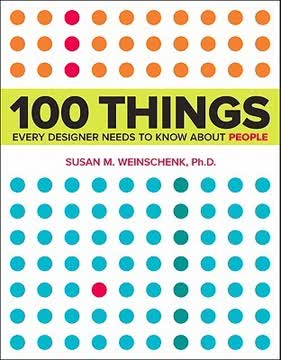


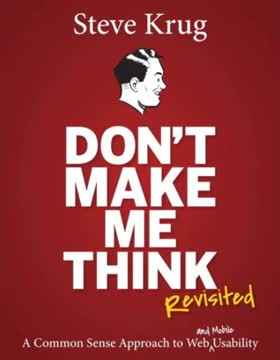
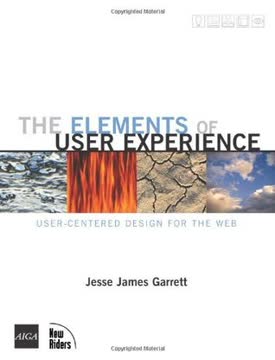

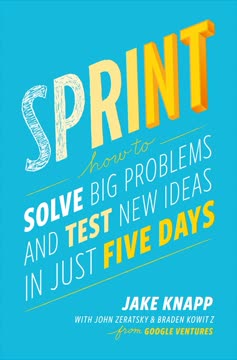


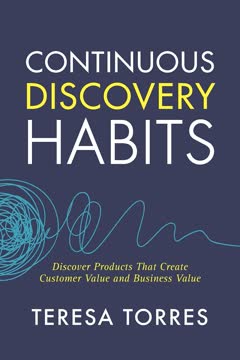
Download PDF
Download EPUB
.epub digital book format is ideal for reading ebooks on phones, tablets, and e-readers.





